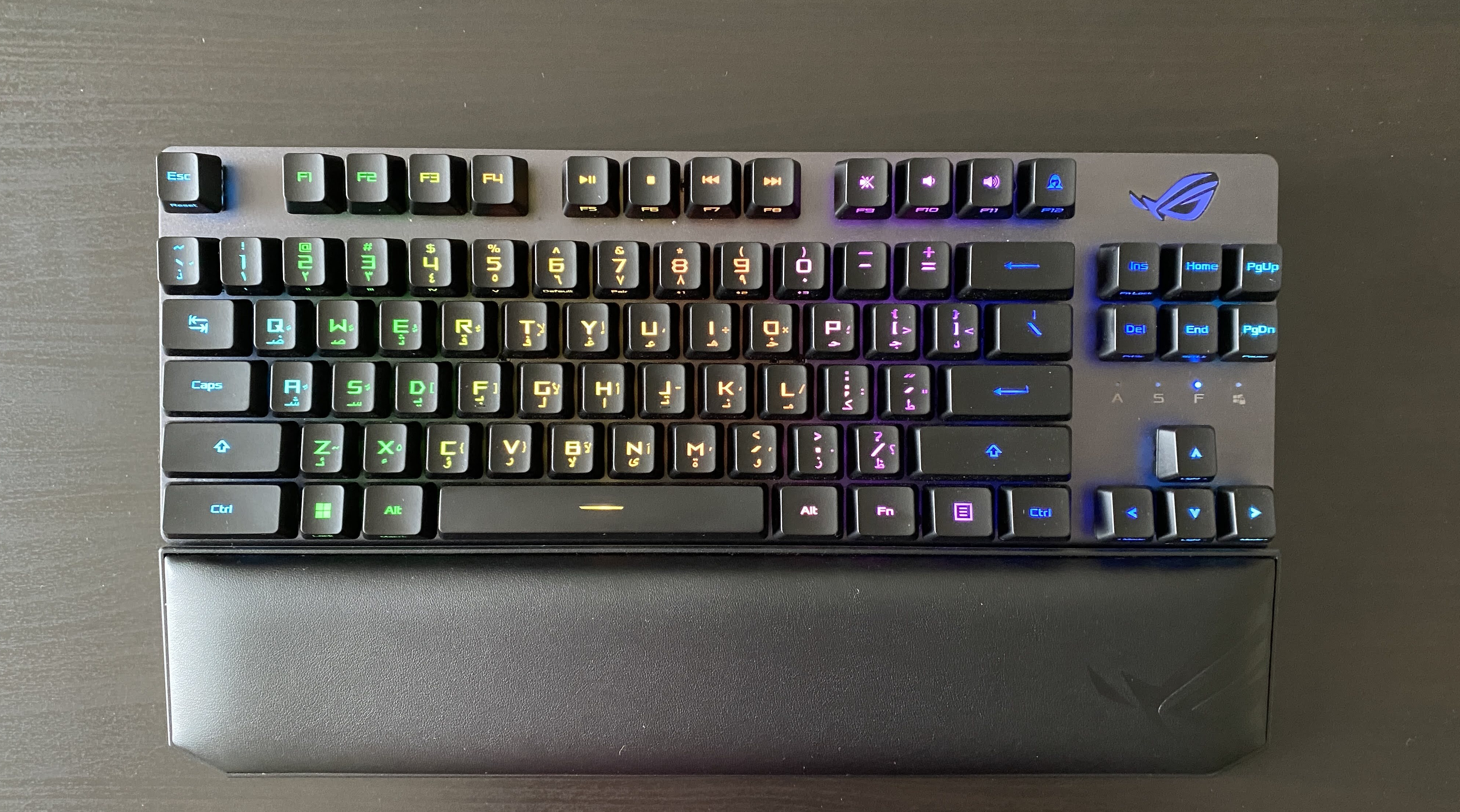TechRadar Verdict
Fairly priced at AED 660, the Asus ROG Strix Scope RX TKL Wireless Deluxe is a great all-round device. The red ROG RX optical switches provide for a smooth typing experience, and the varied connectivity options, ergonomic build and long battery life makes this one of the best TKL keyboards available in the market.
Pros
- +
Great build quality
- +
ROG RX switches
- +
Varied connectivity options
- +
Solid battery life
Cons
- -
Non-standard key caps and switches
Why you can trust TechRadar
30-seconds Review
For as little restraint Asus has shown in naming this keyboard, they have spent an equal amount of time making sure that it is worth saying it. The Asus ROG Strix Scope RX TKL Wireless Deluxe is a nearly perfect TKL keyboard that delivers the goods where it matters the most.
With the custom ROG RX switches, solid wireless connectivity and battery performance, a comfortable build, and bright RGB lighting, Asus’ new keyboard is truly a great all-rounder for your gaming and typing needs.
At AED 660, it is also fairly well-priced and stacks up against both wired and wireless high-end keyboards that offer similar features and performance.
Design and Features
If you are not aware of what a ‘TKL’ or a ‘TenKeyLess’ keyboard is, it is basically where the numpad gets chopped off from a full-sized keyboard, and the overall bezels and shape is minimized to make the keyboard as compact as possible. A TKL keyboard is increasingly becoming a preferred choice among gamers as the smaller footprint gives them larger space for mouse movements, as well as allows them to easily place the keyboard in whatever strategic position they desire.
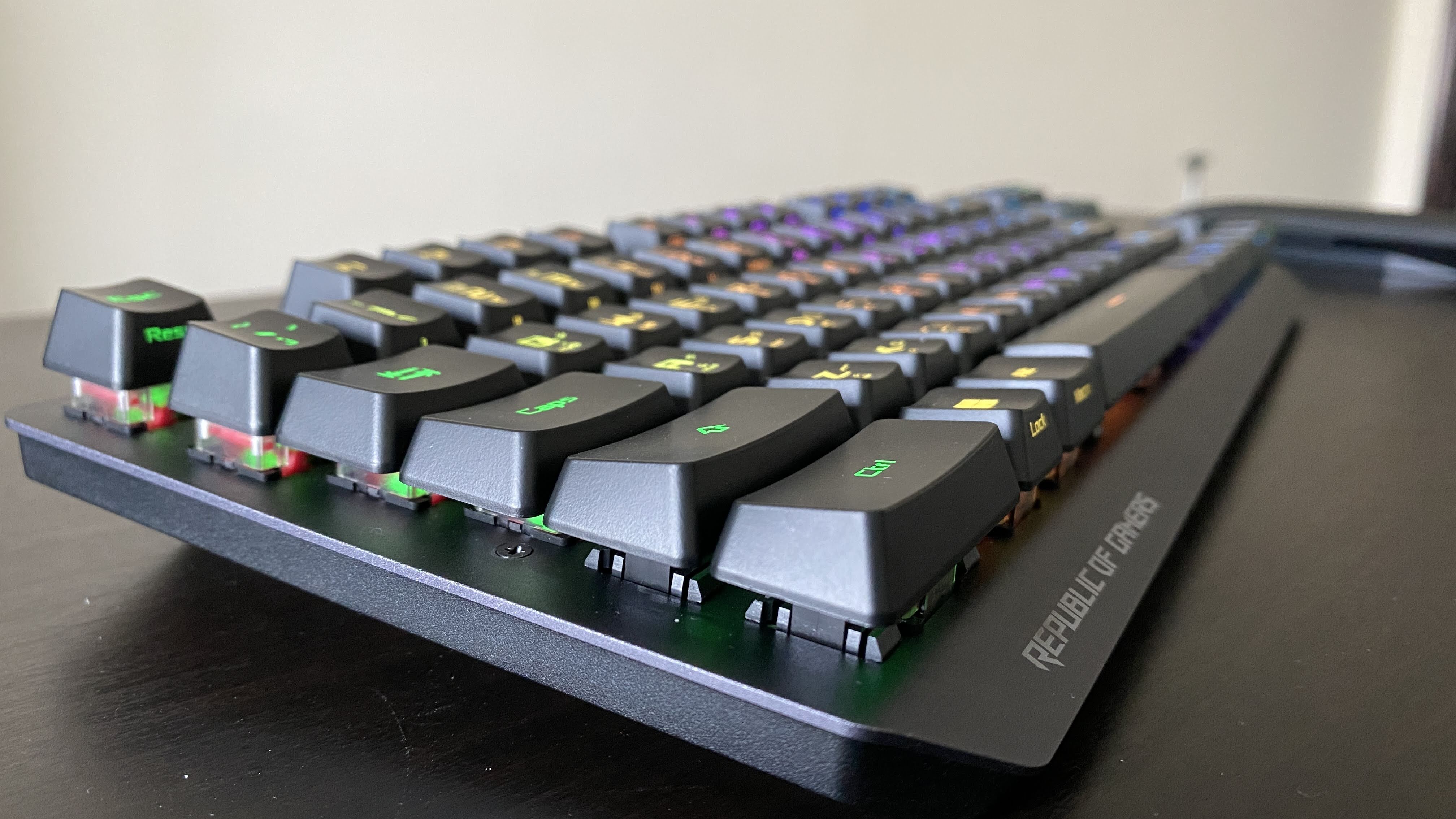
As such, it is not surprising that the TKL Deluxe shares much of the design aesthetics with the ROG Strix Scope RX, which is its full-size keyboard brethren released earlier. They both feature the same characteristics - Asus’ own ROG RX optical-mechanical switches, PBT doubleshot keycaps, and all the RGB bling you would want. It is, however, curiously missing the IP57 waterproofing that the larger keyboard has.
The TKL Deluxe is no doubt a handsome device. The sleek gray alloy body is sparingly littered with logos or other markings that would make it too gargish to appreciate. There is a large ROG logo on the top right corner, and a ‘Republic of Gamer’ printed on the bottom slope of the device.
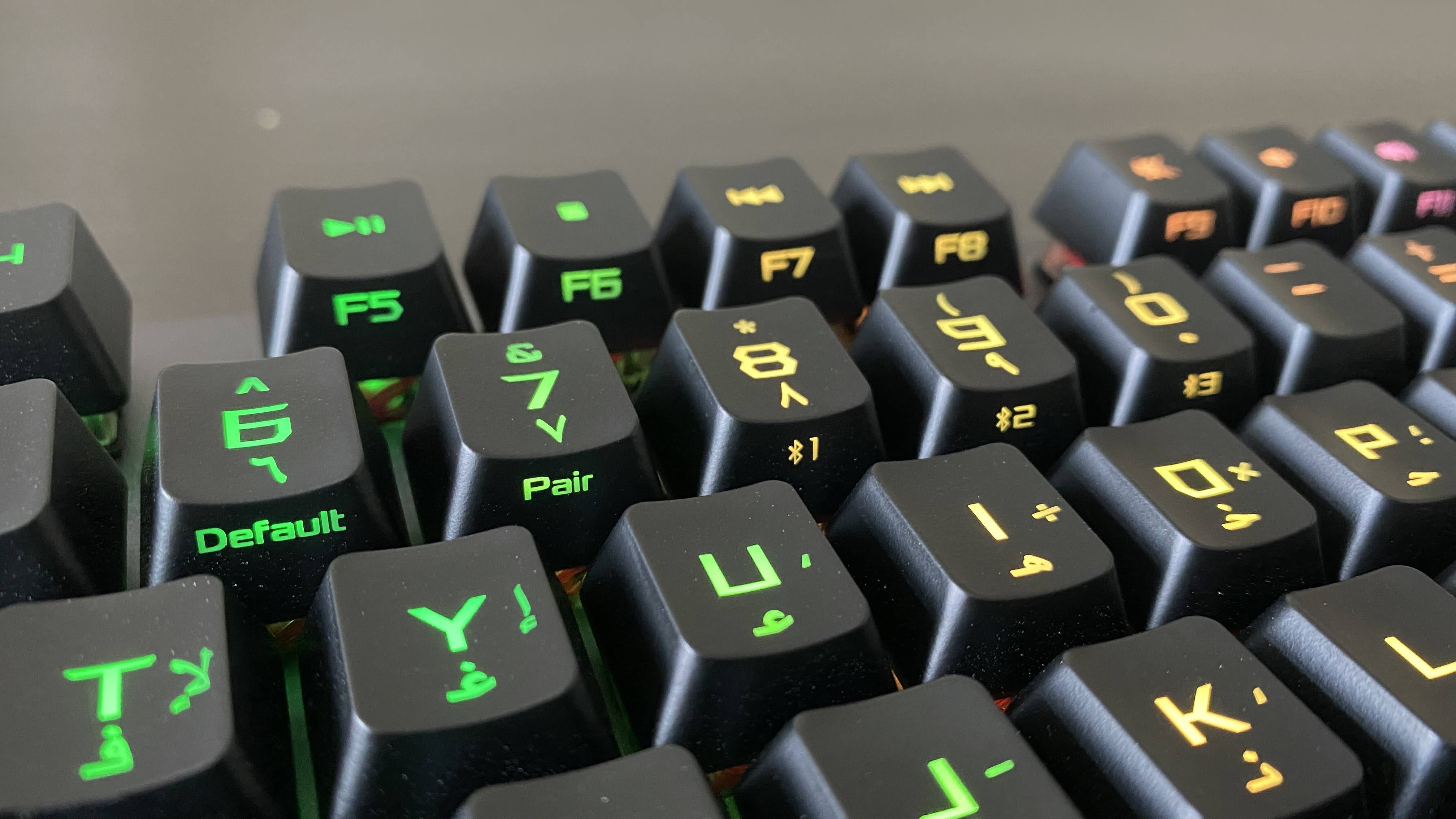
The keycaps are your standard size, and have Arabic lettering on it which will be appreciated by Arab gamers in the Middle East. The PBT doubleshot keycaps are nice to touch and feel solid when typing, however, they are not compatible with any other keycap design so you are entirely reliant on Asus to provide new keycaps in case of a mishap.
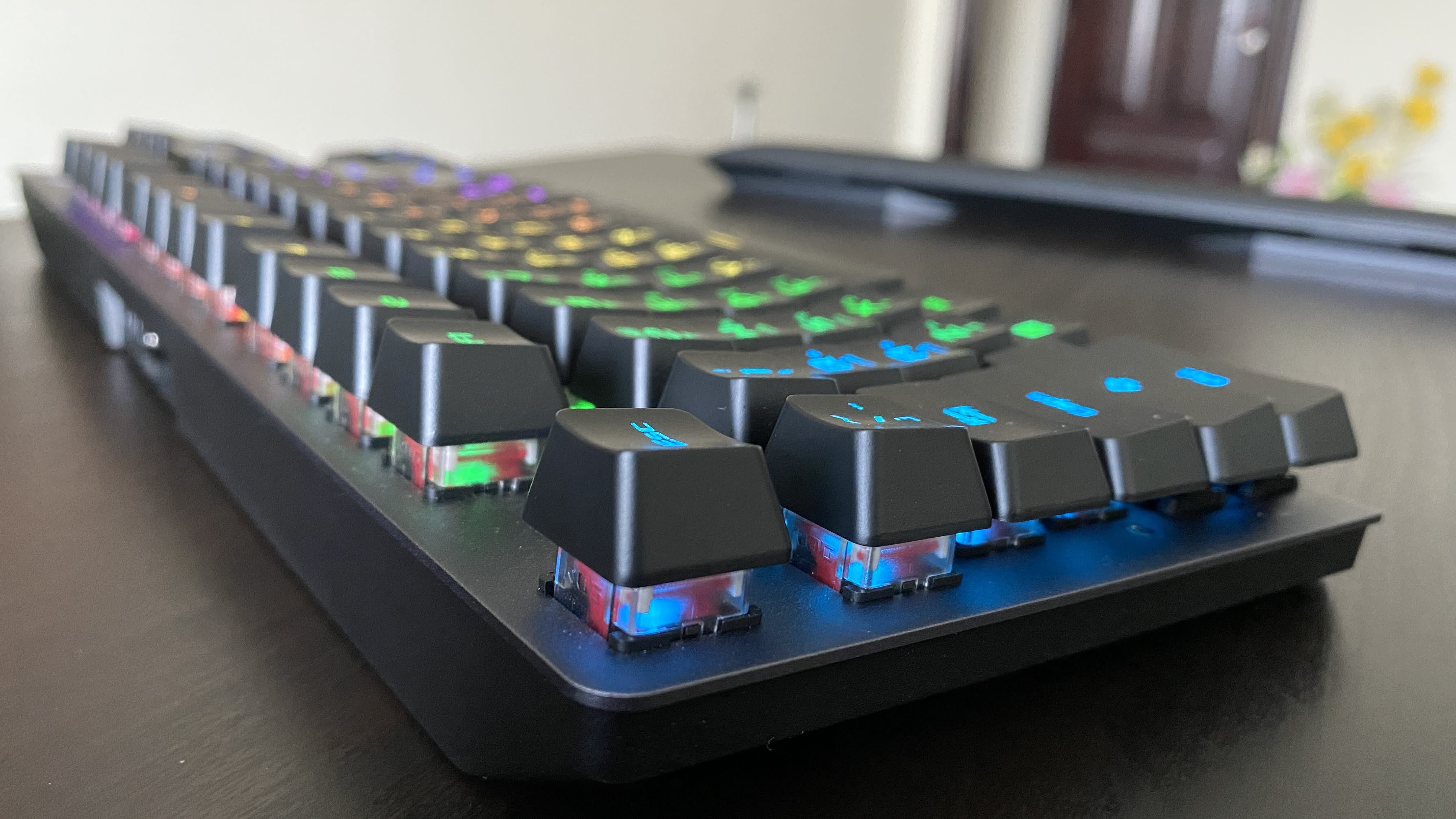
Asus has employed a four-corner stake-like design for the keycaps which eliminates keycap wobble completely. The switches are also housed deep within a clear plastic stem that allows the RGB light to disperse around the keys better, and also shine brighter. Overall, Asus makes its custom switches work, but the lack of standardization with other keycap designs, or even switches, means that customization and self-repair might be a difficult process, if at all possible.

On the top of the device, you will find a switch for the different connectivity options, a USB-C port, and a small magnetic housing to store the wireless adapter that comes with the keyboard. You can connect the keyboard with upto 5 devices simultaneously, with three Bluetooth devices, and with the USB-C connection and the 2.4Ghz wireless, each. Of course, you cannot use the keyboard on all devices at once, but switching between Bluetooth devices and other connections is painless and works smoothly almost every time.
The keyboard also comes with a magnetic wrist rest that attaches to the bottom of the device. Unfortunately, the magnet doesn’t seem to be that strong, and so the wrist pad moves quite easily during heated gaming sessions. If you can keep it intact, though, it provides ample cushioning and good comfort for typing large documents.
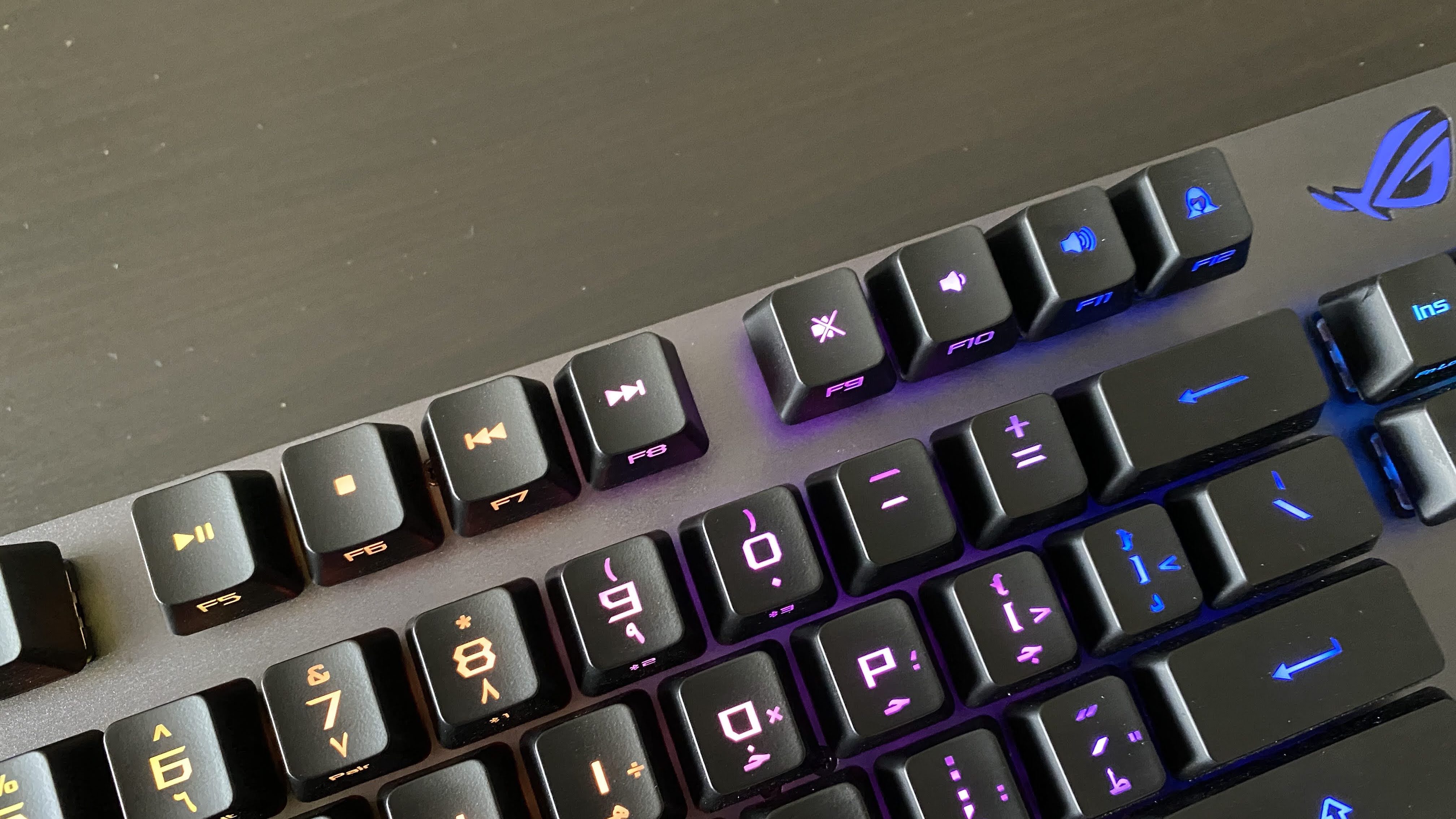
Software and Performance
The TKL Deluxe is entirely self-reliant when it comes to customizing it, so you don’t particularly need the bulky Armoury Crate software to tinker around with the options.
The media keys are designated from the F5 to F12 keys, from where you can play/pause media and change volume settings. The F12 key, in particular, is a ‘boss key’ which when pressed minimizes all the Windows. I am not sure what use this has in a gaming keyboard, but it should come in handy when you are slacking off at work and want to quickly hide the trail from a supervisor.
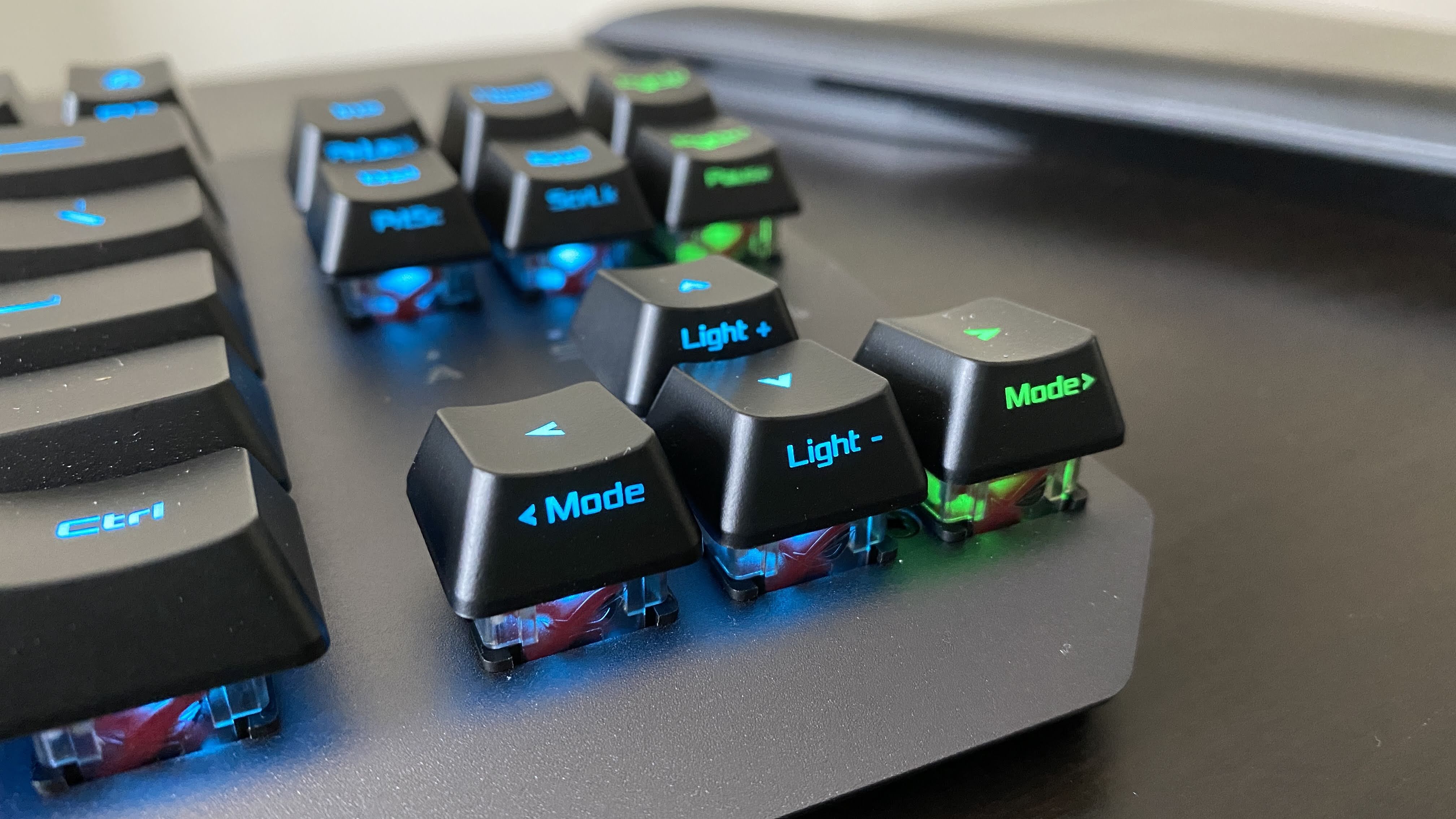
Elsewhere, the arrow keys host the options to cycle through the different RGB modes and also increase/decrease the overall brightness. The 6-0 numerical keys allow you to pair and switch between different Bluetooth devices, while the left Alt key can be used to set Macros.
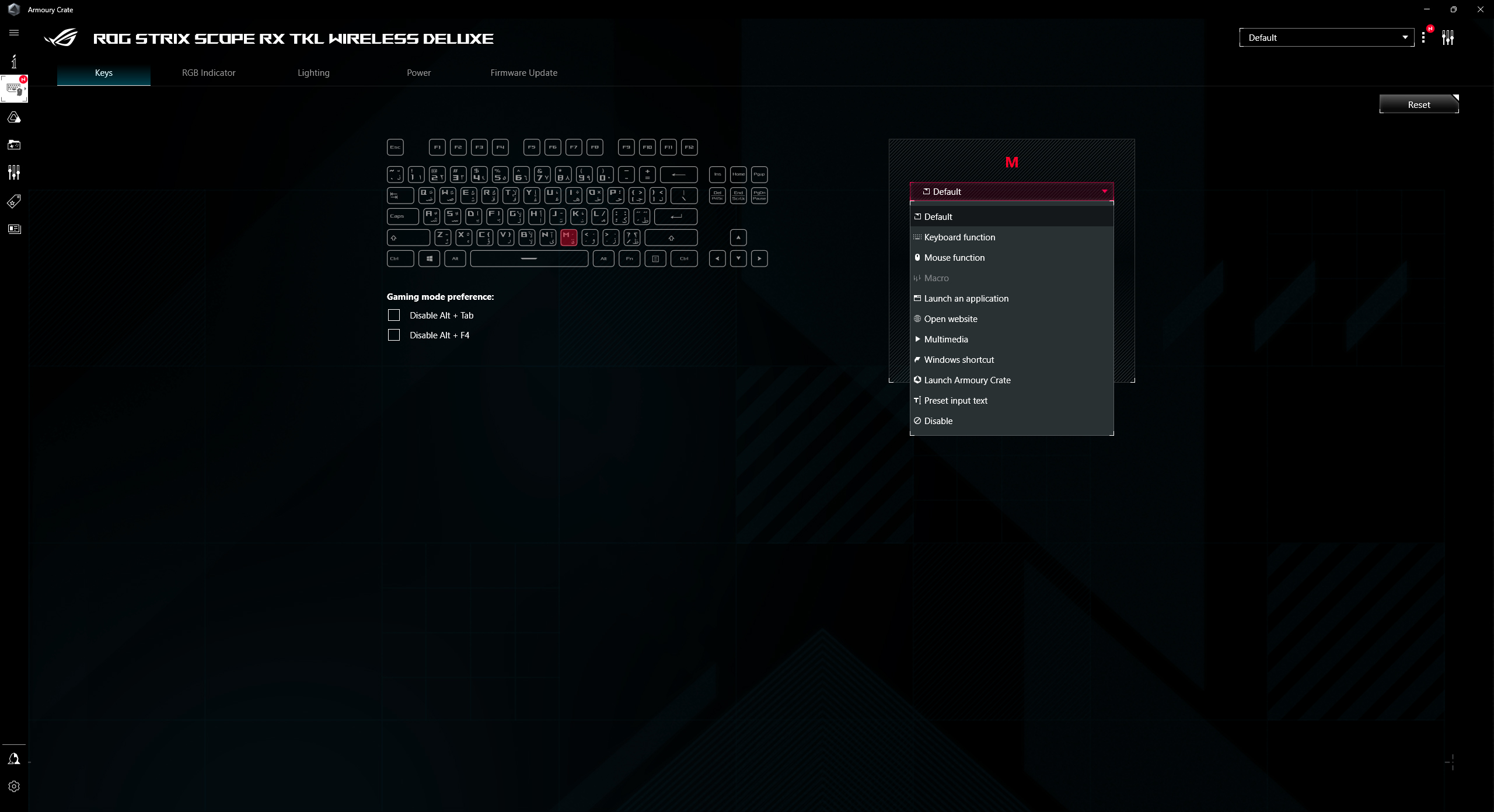
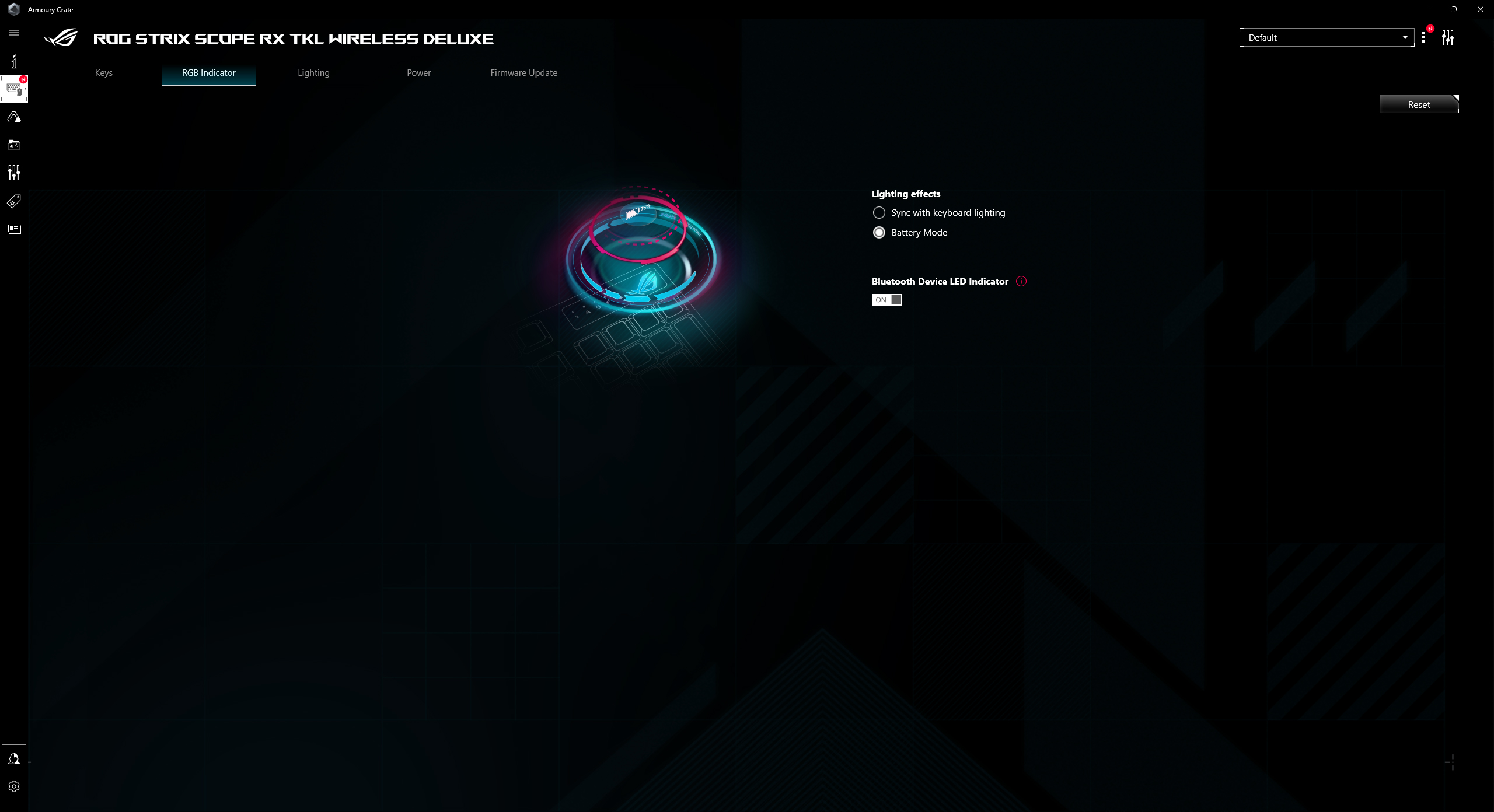
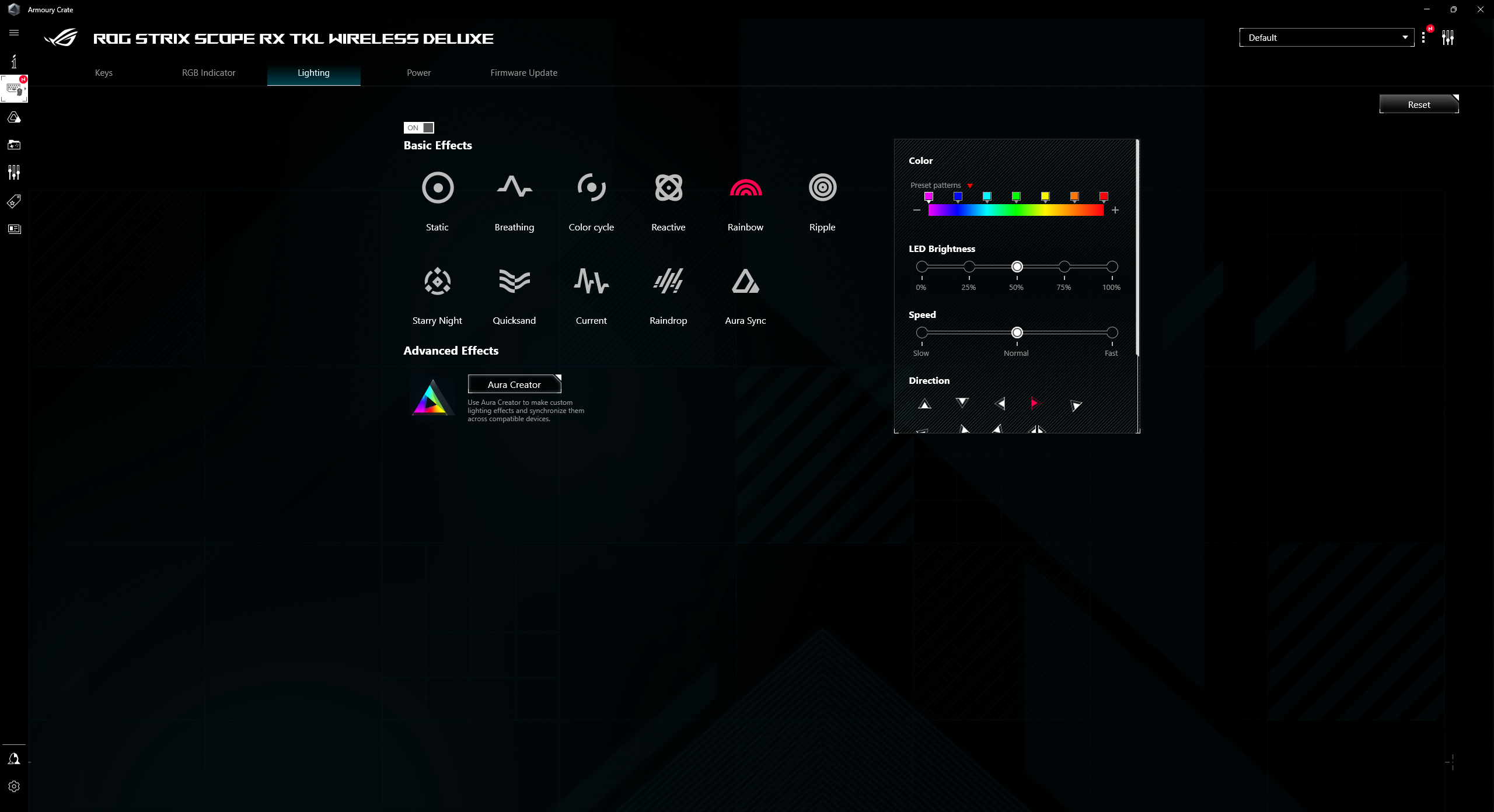
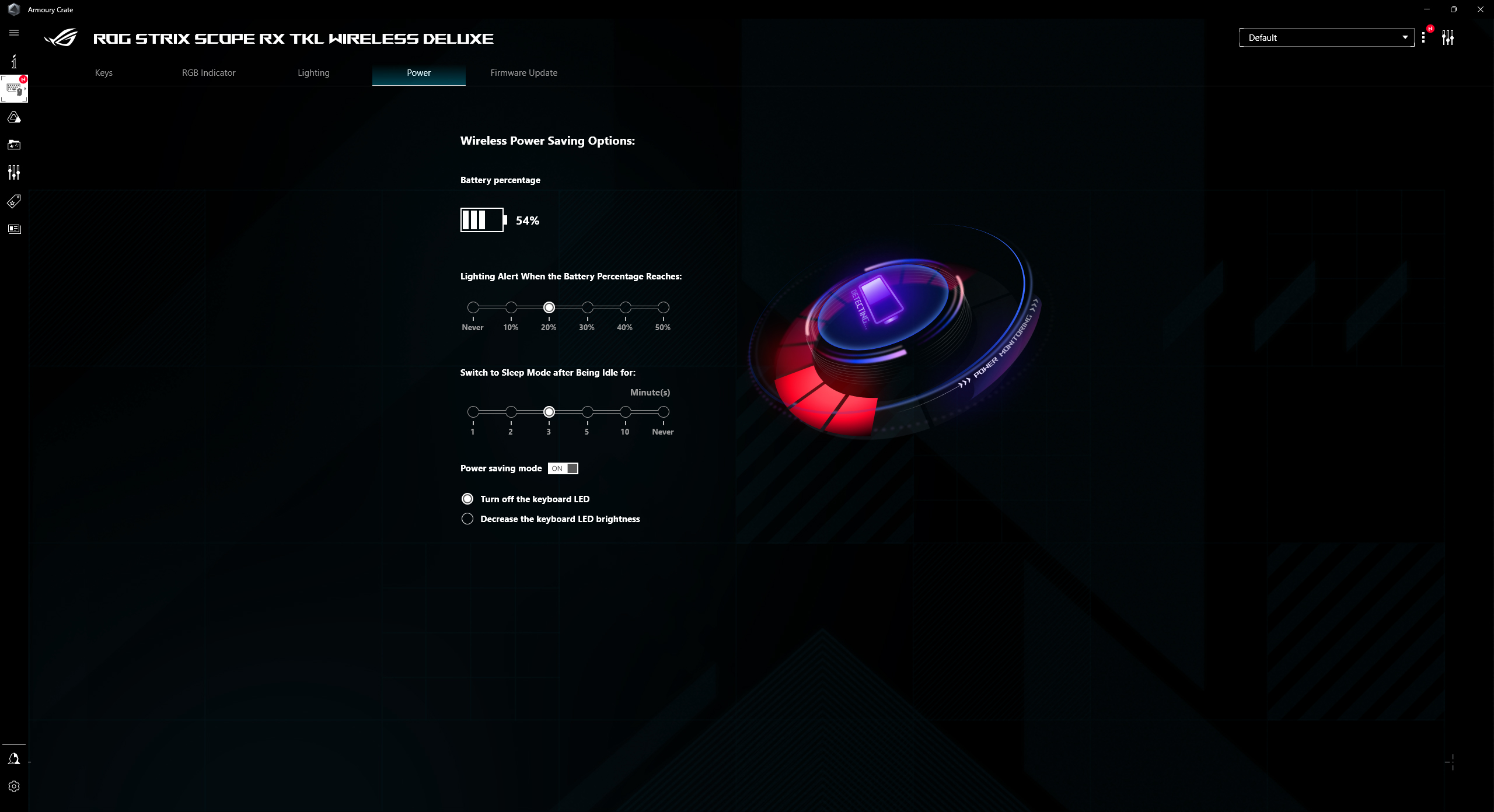
All of these options can be set on the Asus Armoury Crate software, as well, along with giving you the ability to remap any key on the keyboard (except for the FN key, of course). You can also check the battery level on the software, and set a lighting alert when the battery drops to a certain level. Another crucial option is the ability to put the keyboard into sleep mode after several minutes of inactivity, which basically turns off the RGB lights to help save battery. The wireless connection stays enabled, however, and the keyboard comes back to life the moment you press a key without it missing a beat.
We received the red switch variant of the TKL Deluxe, which closely resembles the CherryMX Red switches in its low noise profile and typing speed. Coming from a Razer keyboard, which employed much louder optical mechanical switches, it was a bit hard to get used to the TKL Deluxe’s much smoother and somewhat mushier typing experience. After a few days of use, however, we got into the groove and the red switches felt natural and offered great feedback to type on. The keyboard also comes with a blue switch variant, which is a lot noisier and more closely resembles the quintessential mechanical keyboard typing experience if you are looking for that.
The red switches offer an initial force of 40g to depress, and acutates after 1.5mm of travel. In real world use, the keys responded quickly and without much latency on the wireless modes. In Halo Infinite, I was able to execute commands as quickly in wireless mode, as I was in wired mode. However, for the best possible experience, we recommend using the keyboard in either wired or 2.4Ghz wireless as Bluetooth might present some problems or latency issues over time.
For general typing, the TKL Deluxe remained comfortable and speedy. We wouldn’t say our typing speed increased exponentially, but the smooth red switches offered a far more pleasant typing experience than the Razer Huntsman V2 Analog keyboard we use as our daily driver.
Battery Life
Asus claims upto 76 hours of battery life with the default lighting setting, and while we have no tool to exactly measure that, we would say that it does hold up well to the claim. In my nearly two weeks of use, the battery dropped from 75% to 53%, which is mighty impressive considering I have the RGB lights to almost 80% brightness. On a full charge, the battery should easily last you for a couple of weeks depending on your usage. If you are not a heavy user, a single charge could easily hold for at least a month or more.
Should you buy the Asus ROG Strix Scope RX TKL Wireless Deluxe gaming keyboard?
Buy it if...
You want an all-rounder TKL keyboard
The ROG RX switches, combined with the sleek alloy body, handsome looks and comfortable ergonomics makes the TKL Deluxe a great all-round keyboard.
You want great battery life
The battery on TKL Deluxe will easily last you a couple of weeks without compromising on RGB brightness.
You want multiple connectivity options
The TKL Deluxe can connect upto 5 devices simultaneously, thanks to its varied wireless connectivity options.
Don't buy it if...
You want to customise it
Asus employs its own keycap and switch design, which means that you cannot swap it with what’s available in the market.
Mufaddal Fakhruddin is an experienced Editor with a demonstrated history of working in the computer games industry. He is skilled in social media, video idea creation and production, media relations, and journalism.
